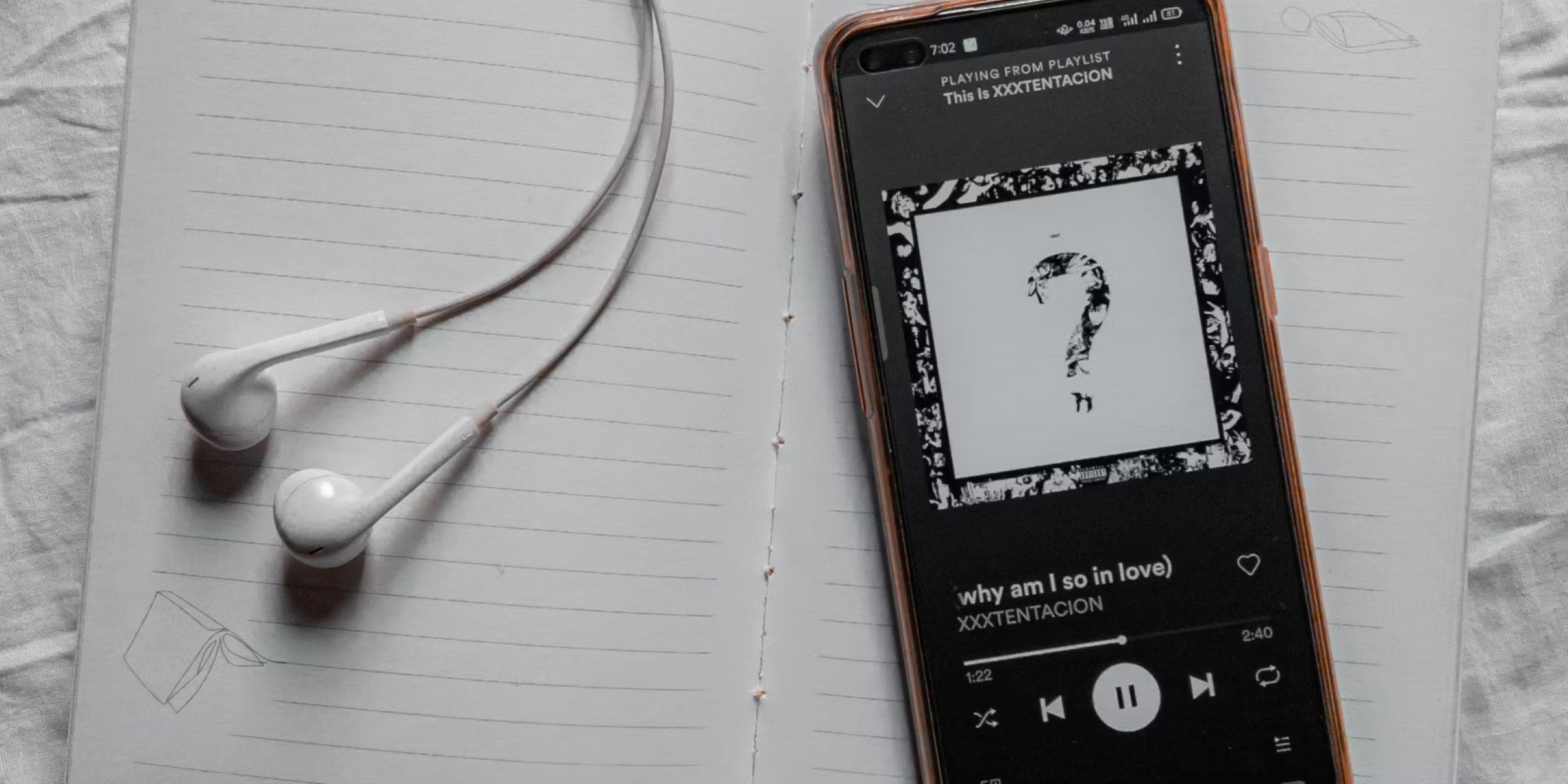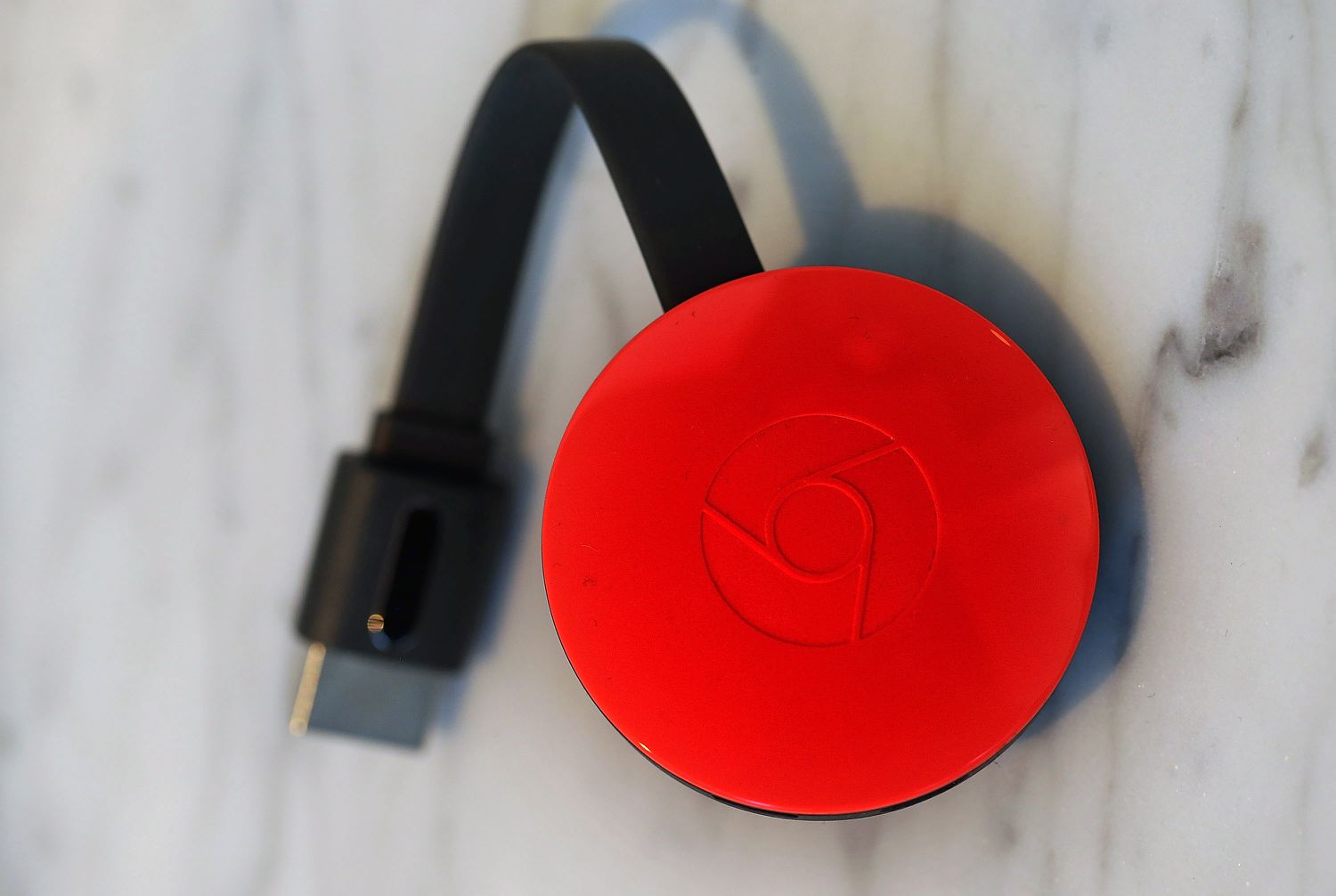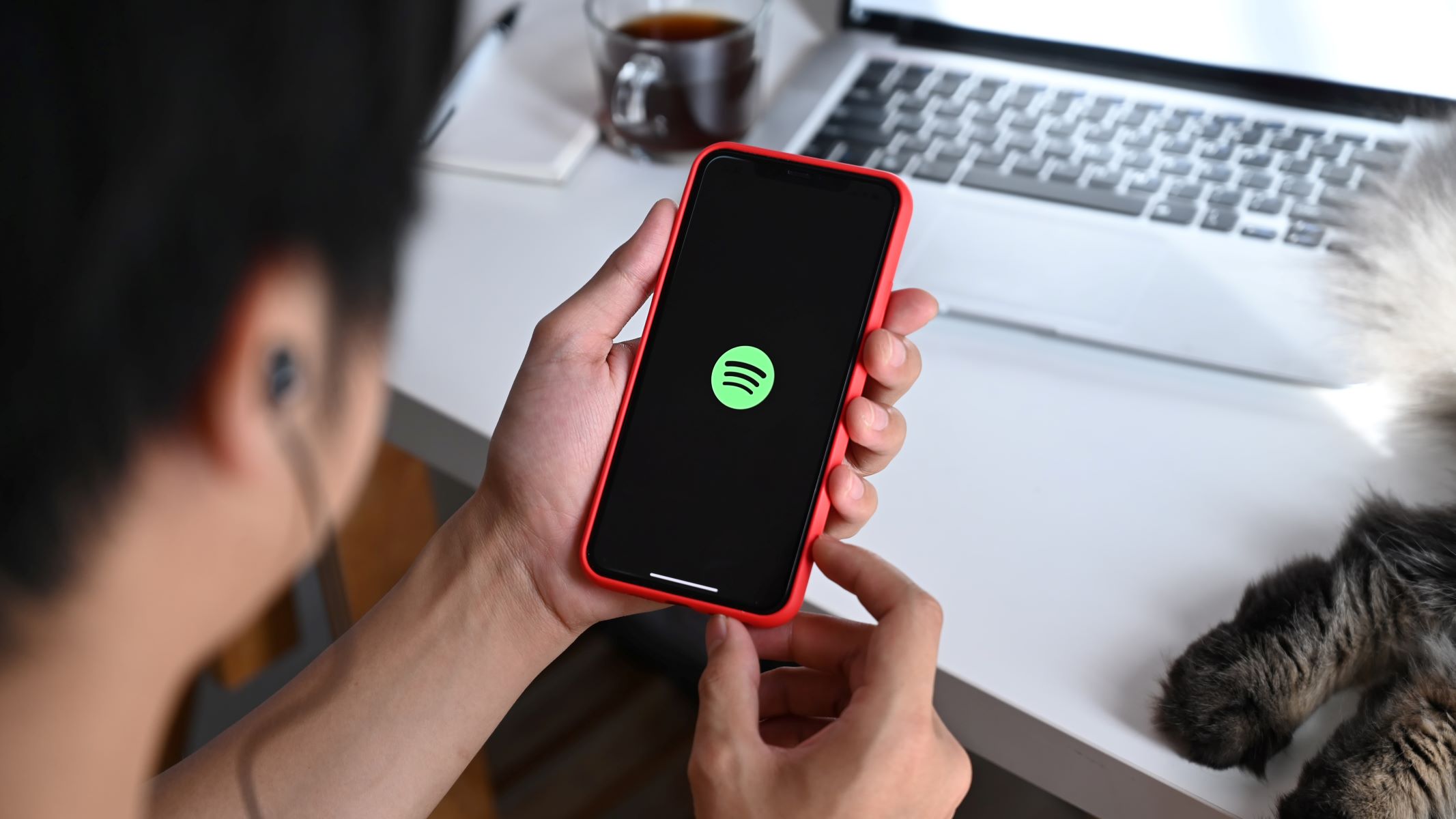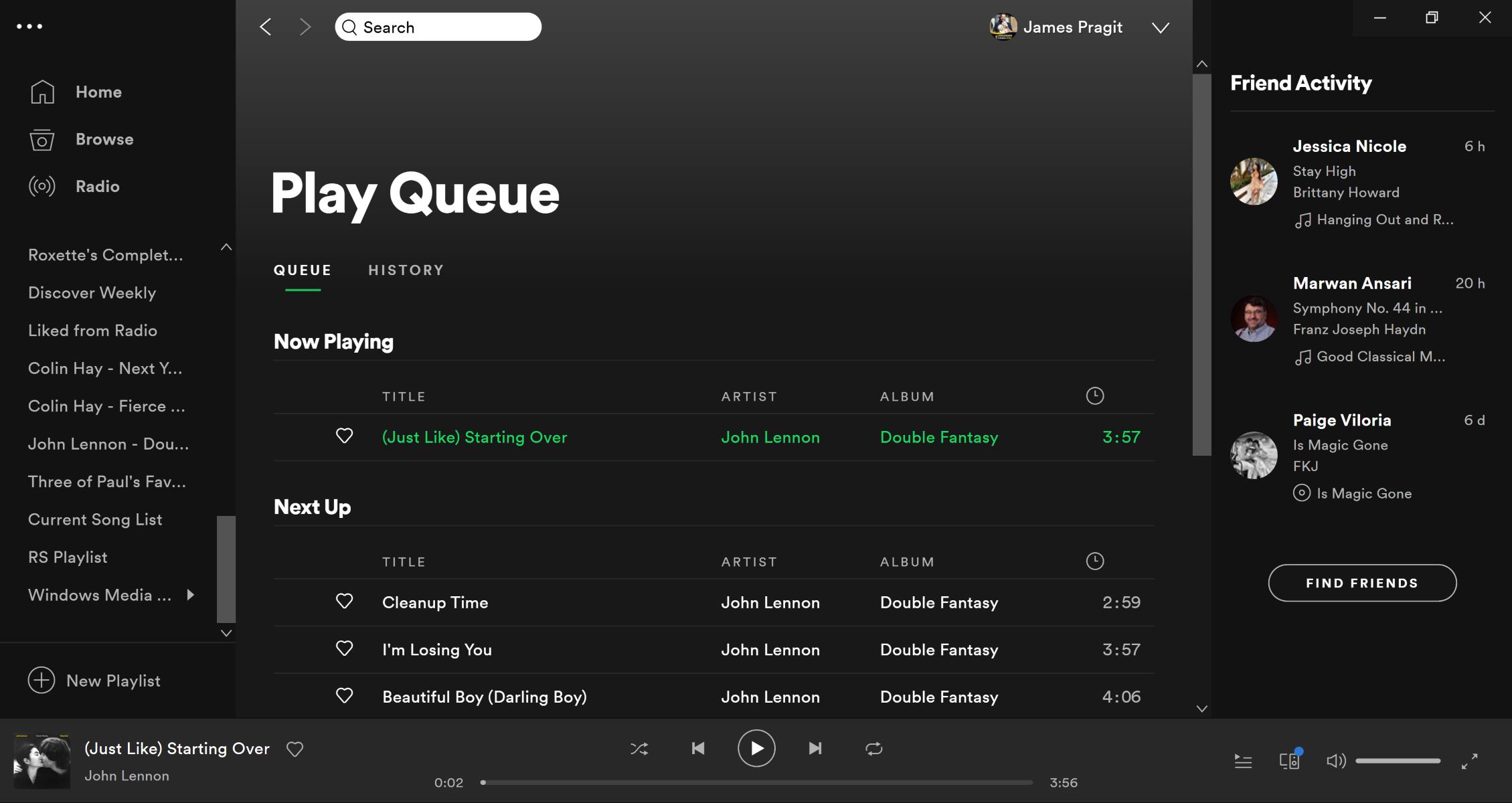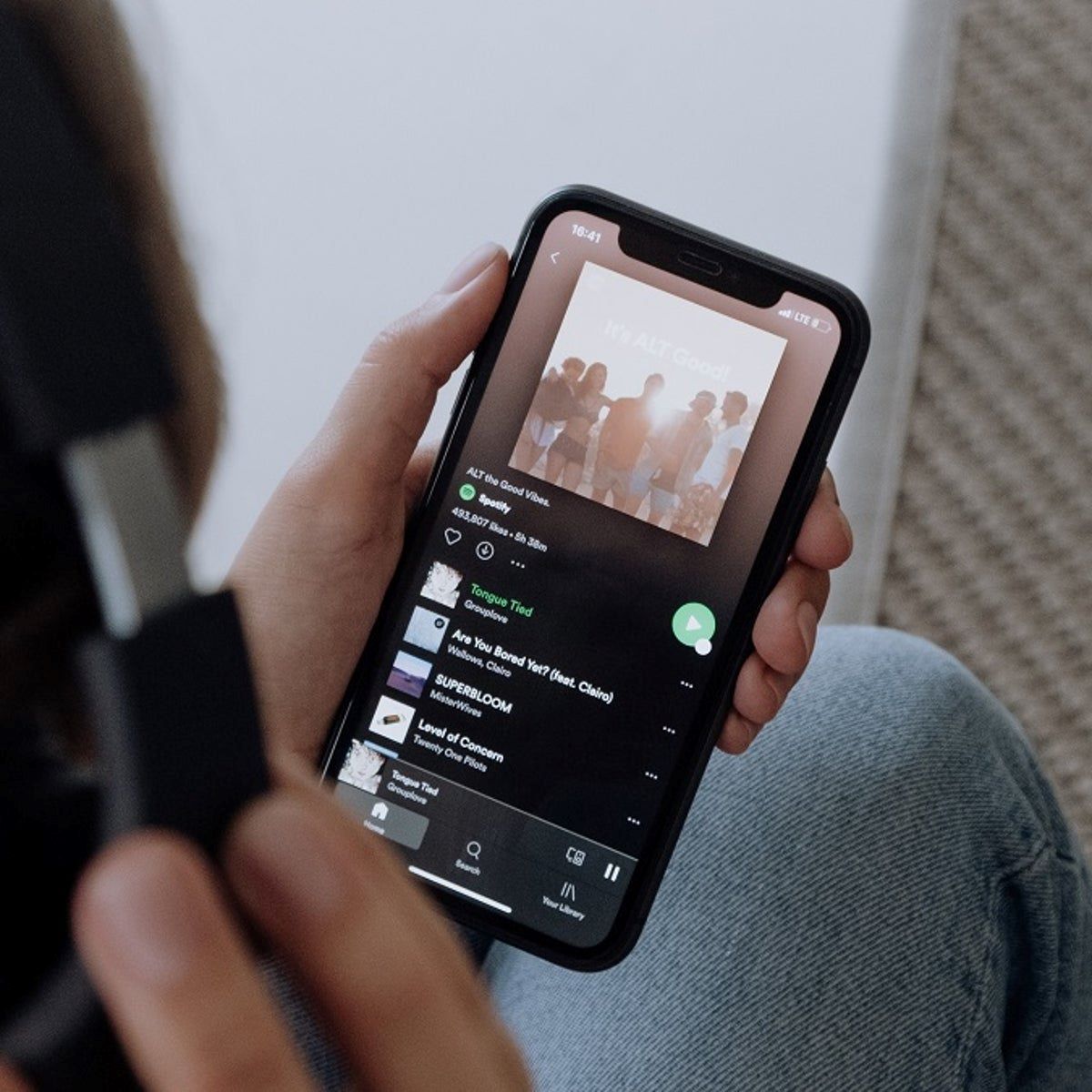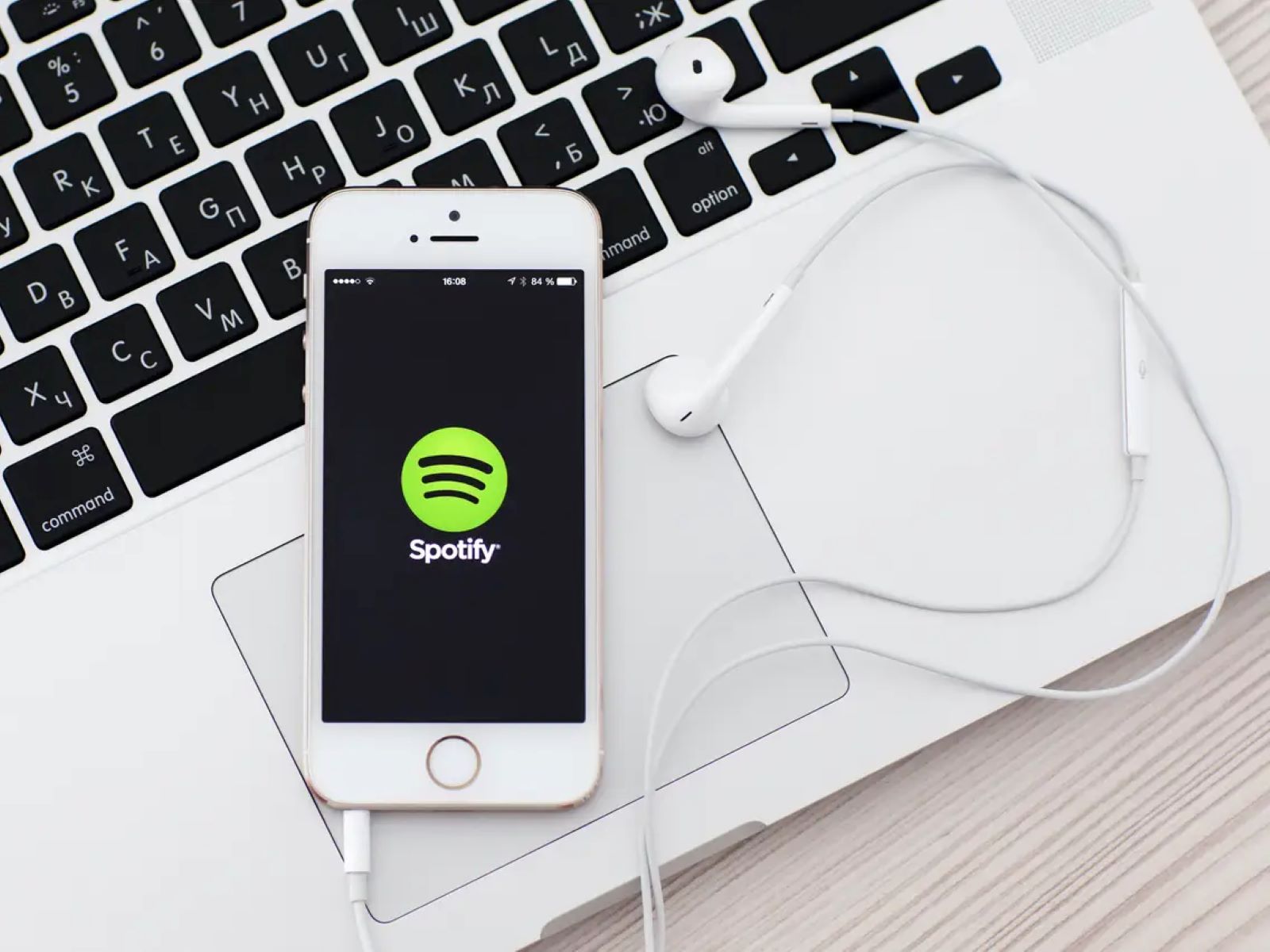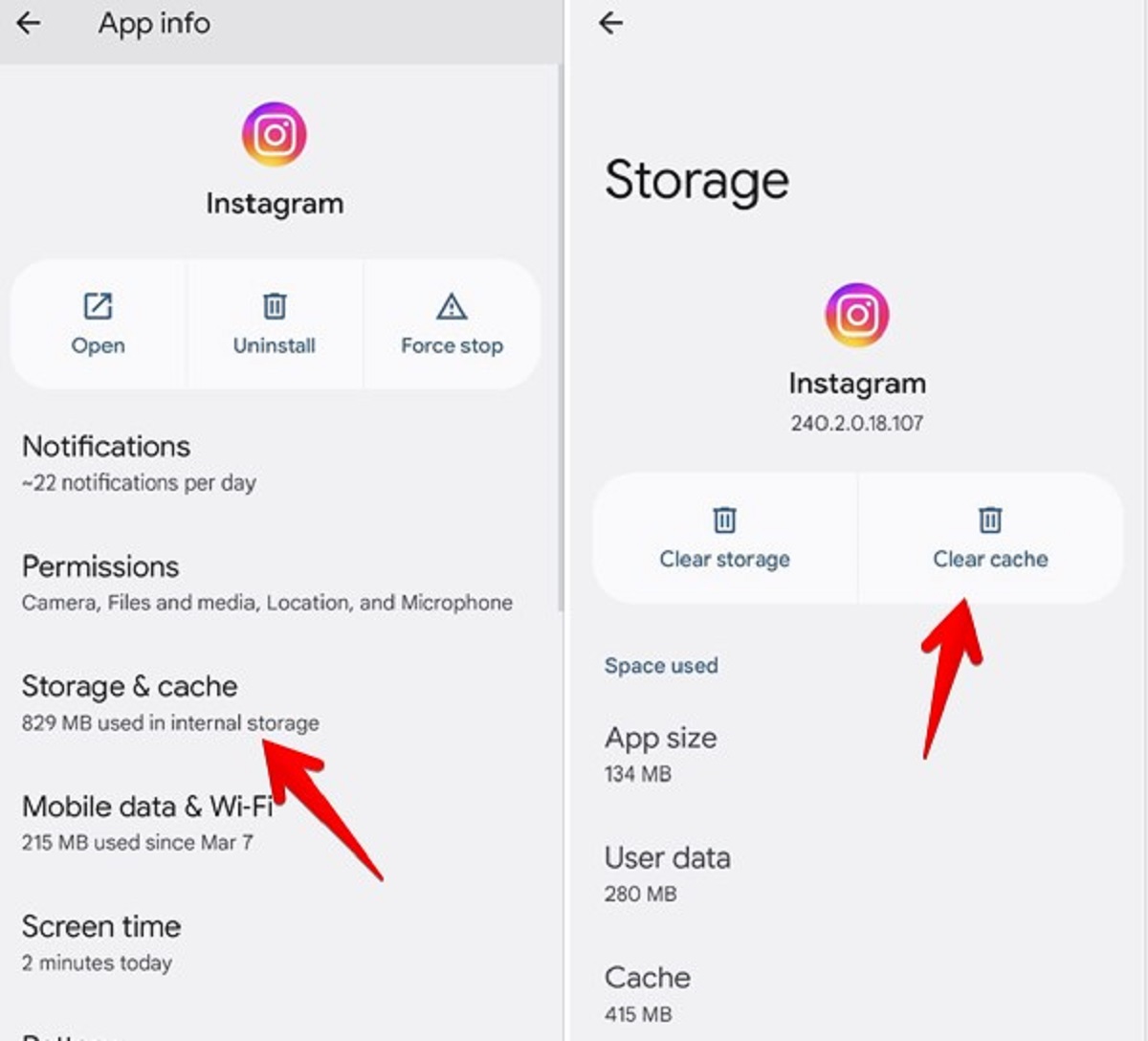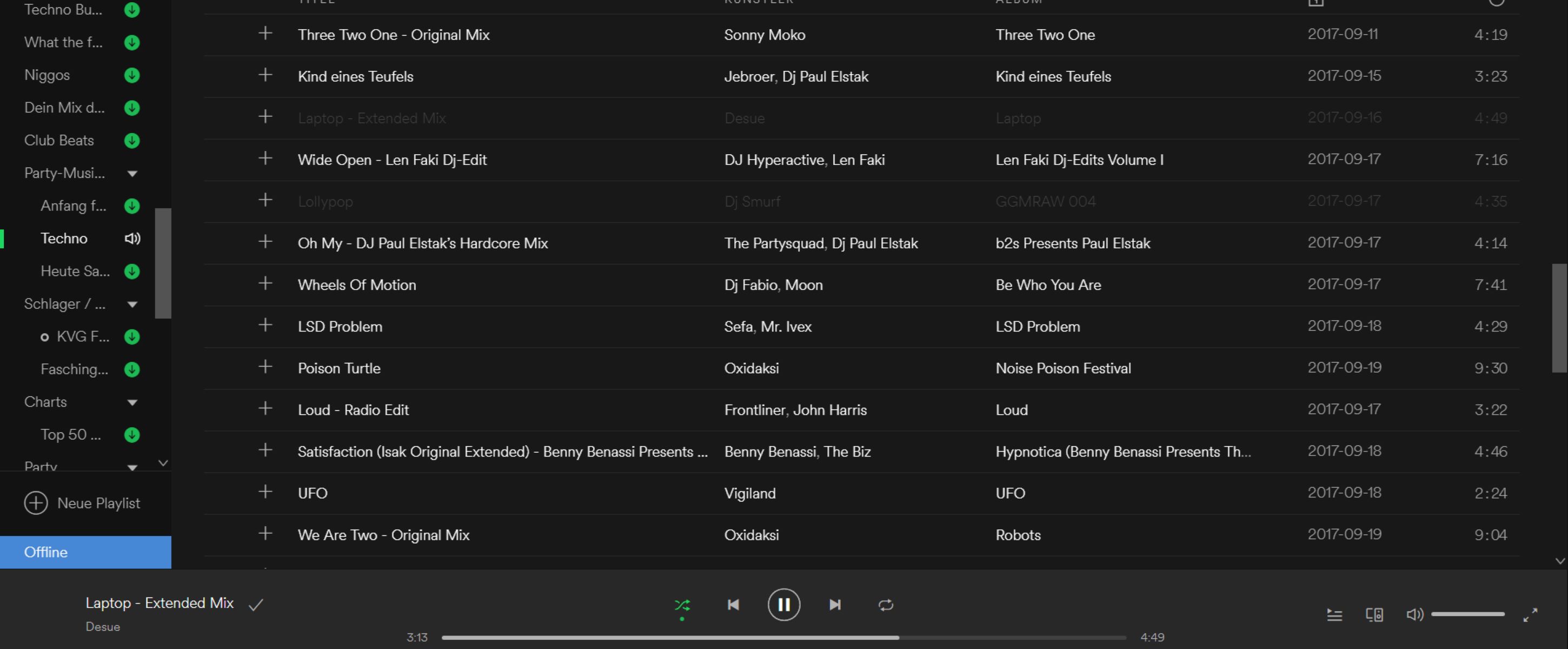Introduction
Spotify is one of the most popular music streaming platforms in the world, with millions of users enjoying its vast library of songs, podcasts, and playlists. However, there are times when Spotify may not play your favorite tunes, leaving you frustrated and wondering why.
There can be various reasons why Spotify isn’t playing, ranging from connection issues to device compatibility problems. In this article, we will explore the different factors that may prevent Spotify from playing, as well as potential solutions to help you get back to enjoying your music in no time.
It’s important to note that while these solutions have worked for many users, they may not guarantee a fix for all scenarios. If you’ve tried the recommended steps and are still facing issues, it might be worth reaching out to Spotify support for further assistance.
Now, let’s dive into some of the common causes behind Spotify playback problems and what you can do to resolve them.
Connection Issues
One of the primary reasons why Spotify may not be playing is due to connection issues. Whether you are using Wi-Fi or a mobile data connection, problems in the network can disrupt the streaming process.
If you’re experiencing playback issues, it’s essential to check your internet connection. Begin by ensuring that you have a stable and reliable internet connection. You can try opening other websites or using other apps to determine if the issue lies specifically with Spotify or if it’s a broader connectivity problem.
If you are on a Wi-Fi network, try restarting your router to reset the connection. This can help resolve any temporary glitches with your network. Additionally, you can try connecting to a different Wi-Fi network to see if the problem persists.
If you’re using a mobile data connection, check if you have a strong signal. Sometimes, being in an area with weak cellular reception can impact the performance of Spotify. Consider moving to a location with better coverage to see if it improves playback.
It’s worth mentioning that if you’re using Spotify’s offline mode, you won’t be able to stream music unless you have previously downloaded the songs. Offline mode can be useful for conserving data or for times when you don’t have an internet connection available. However, if you’re currently in offline mode and experiencing playback issues, try switching back to online mode to see if it resolves the problem.
In summary, connection issues can disrupt the playback of music on Spotify. Ensure that you have a stable internet connection and consider restarting your router or switching to a different network if needed. Additionally, check if you’re in offline mode and switch back to online mode to test if it resolves the playback problem.
Wi-Fi or Data Connection Problems
When it comes to streaming music on Spotify, a stable and reliable internet connection is crucial. Wi-Fi or mobile data connection problems can often disrupt the playback experience. Here are some common Wi-Fi or data connection issues that may be causing Spotify playback problems:
1. Weak Wi-Fi Signal: If you’re using Wi-Fi to connect to the internet, a weak signal can result in buffering or playback interruptions. Make sure you’re close to the Wi-Fi router and try moving to a different location within your house to improve the Wi-Fi signal strength. You can also try resetting your router or contacting your internet service provider if the problem persists.
2. Slow Internet Speed: A slow internet connection can affect the streaming quality on Spotify. Check your internet speed using an online speed test tool and compare it to the minimum requirements for streaming Spotify. If your connection speed is below the recommended threshold, consider upgrading your internet plan or contacting your internet service provider to address the speed issue.
3. Data Limitations: If you’re using mobile data to stream music on Spotify, you may encounter playback problems if you exceed your data limit or are in an area with poor network coverage. Check your data usage and ensure that you haven’t reached your data cap. If you’re experiencing poor network coverage, consider switching to a different network or connecting to Wi-Fi when possible.
4. Network Congestion: During peak hours, internet networks can become congested, resulting in slower speeds and potential playback issues. If you notice consistent playback problems at certain times of the day, it could be due to network congestion. Try streaming music during off-peak hours to see if the playback improves.
5. Router Issues: Sometimes, issues with your Wi-Fi router can impact the performance of Spotify. Restarting the router or updating its firmware can help resolve any router-related problems. If you’re unsure how to do this, consult the user manual for your specific router or contact your internet service provider for assistance.
In summary, Wi-Fi or data connection problems can interfere with the smooth playback of music on Spotify. Ensure that you have a strong Wi-Fi signal or a stable mobile data connection. Check for any limitations or issues with your internet plan and consider troubleshooting router-related problems. By addressing these connection issues, you can improve your Spotify playback experience.
Offline Mode
Spotify offers an offline mode feature that allows users to download their favorite songs, albums, or playlists for listening without an internet connection. While offline mode can be a convenient way to enjoy music when you’re not connected to Wi-Fi or have limited data, it can also be a potential cause of playback problems if not used correctly.
If Spotify is not playing, it’s worth checking if you’re unintentionally in offline mode. Here’s what you can do:
1. Check Your Settings: Open the Spotify app on your device and navigate to the settings. Look for the option that enables or disables offline mode. Make sure it is turned off if you want to stream music online. If it’s enabled, turn it off and try playing the music again.
2. Verify Your Downloads: If you’ve downloaded songs, albums, or playlists for offline listening, errors during the download process can result in playback issues. Go to the “Your Library” section in Spotify and check if your downloaded content is available. If any downloads are incomplete or corrupted, delete them and re-download the content to ensure it plays smoothly.
3. Update Your Downloads: Spotify regularly updates the available content on its platform, including songs and albums. If you have downloaded content that has been removed or updated, it may result in playback errors. Consider updating your downloads to ensure you have the latest versions of the songs or albums you want to listen to.
4. Manage Storage Space: If you have limited storage space on your device, it can affect the performance of Spotify. Check if you have enough free space to accommodate your downloaded content. If your device’s storage is nearly full, consider removing unnecessary files or deleting some downloaded content from Spotify to free up space.
Remember, offline mode is designed for offline playback and may not offer the same features and functionality as online streaming. If you still experience playback issues even when offline mode is disabled, it’s worth considering other potential causes outlined in this article.
In summary, offline mode can be a convenient way to enjoy Spotify without an internet connection. However, if Spotify is not playing, it’s important to check your offline mode settings, verify your downloads, update your content, and manage your device’s storage space. By ensuring that your offline mode settings are correctly configured, you can improve your Spotify listening experience.
Cross Device Playback
Spotify allows users to seamlessly transition between different devices while listening to music. This cross device playback feature lets you start listening on one device and continue on another without any interruptions. However, certain issues can arise that may prevent Spotify from playing across devices. Here are some solutions to address cross device playback problems:
1. Check Device Compatibility: Ensure that the devices you are trying to use for cross device playback are compatible with Spotify. Some older devices or operating systems may not be fully supported, leading to playback issues. Verify that your devices meet the minimum requirements specified by Spotify for seamless cross device playback.
2. Log Out and Log In: If you’re unable to play music on a different device, try logging out of Spotify on all devices and then logging back in. This process can refresh your account settings and help resolve any temporary glitches or sync issues that may be affecting cross device playback.
3. Enable Cross Device Playback: In some cases, you may have disabled the cross device playback feature by accident. Check your account settings in the Spotify app and ensure that cross device playback is enabled for a seamless listening experience across devices.
4. Sync Playlists and Downloads: If you’re experiencing playback issues across devices, it’s possible that your playlists and downloaded content are not synced correctly. Make sure that your playlists and downloads are up to date and properly synced across all devices. Consider refreshing or re-downloading the content on each device to ensure it plays without interruptions.
5. Update Your App: Outdated versions of the Spotify app may not be fully compatible with the cross device playback feature. Check for any available updates in the app store or marketplace for your device’s operating system. Updating to the latest version of the Spotify app can sometimes resolve issues with cross device playback.
If you’re still unable to play music seamlessly across devices after trying the above steps, it’s advisable to reach out to Spotify support for further assistance. They can provide personalized guidance and troubleshoot specific issues that may be affecting your cross device playback.
In summary, cross device playback allows you to start listening on one device and continue on another. To ensure smooth cross device playback, check device compatibility, log out and log back in, enable the feature in your account settings, sync playlists and downloads, and update your app to the latest version. By addressing these factors, you can enhance your Spotify listening experience across different devices.
Device and Software Compatibility
One of the key factors that can affect Spotify playback is device and software compatibility. Since Spotify is available on a wide range of devices and operating systems, it’s important to ensure that your device and software meet the requirements for optimal performance. Here are some considerations to keep in mind:
1. Device Requirements: Check if your device meets the minimum requirements specified by Spotify. Older devices or those with limited processing power may struggle to handle the demands of streaming music, resulting in playback issues. Ensure that your device has sufficient memory, a stable internet connection, and meets the recommended specifications for a smooth Spotify experience.
2. Operating System Updates: Keeping your device’s operating system up to date is crucial for compatibility with the latest version of the Spotify app. Software updates often include bug fixes, security enhancements, and improvements to performance. Check for any available updates for your device’s operating system and install them to ensure compatibility with the Spotify app.
3. App Updates: Spotify frequently releases updates to its app to introduce new features, fix bugs, and enhance performance. Make sure that you’re using the latest version of the Spotify app on your device. Check the app store or marketplace for updates and install them to ensure compatibility and access to the latest features and improvements.
4. Third-Party Apps and Modifications: Certain third-party apps or modifications to your device’s software can interfere with Spotify’s functionality. If you’ve installed any music-related apps, equalizers, or other system modifications, try disabling or removing them temporarily to see if it resolves the playback issues. Additionally, if you’re using Spotify through a web browser, ensure that your browser is up to date and compatible with the platform.
5. Device-Specific Troubleshooting: If you’re experiencing playback issues on a specific device, consult the manufacturer’s website or user manual for device-specific troubleshooting steps. They may have specific recommendations or settings that can help address playback problems on their devices.
By ensuring that your device and software meet the necessary requirements, you can enhance the compatibility of Spotify and minimize playback issues. However, if you’re still experiencing problems after following these steps, it’s advisable to reach out to Spotify support for further assistance.
In summary, device and software compatibility are crucial for a smooth Spotify playback experience. Check your device’s specifications, keep your operating system and Spotify app up to date, and consider disabling any third-party apps or modifications that may interfere with Spotify’s functionality. By addressing these compatibility factors, you can improve your Spotify playback performance.
Application Version Issues
Having an outdated or incompatible version of the Spotify app can lead to various playback issues. It’s essential to keep your app updated to the latest version to ensure compatibility with your device and access to the latest features and bug fixes. Here are some considerations regarding application version issues:
1. Update the App: Check if there are any available updates for the Spotify app on your device. App updates often include performance improvements, bug fixes, and compatibility enhancements. Visit the app store or marketplace for your device’s operating system and look for any available updates. Install them to ensure you have the most up-to-date version of the Spotify app.
2. Automatic Updates: Enable automatic updates for the Spotify app on your device. This ensures that you always have the latest version without having to manually check for updates. Automatic updates can be enabled in the settings of your device or within the app store or marketplace itself, depending on your device’s operating system.
3. Clear the Cache: Clearing the cache of the Spotify app can help resolve issues related to outdated or corrupted data. The process of clearing the cache varies depending on your device’s operating system. Refer to the settings or app management section of your device to find the option to clear the cache for the Spotify app.
4. Reinstall the App: If you’re still encountering playback problems after updating the app and clearing the cache, consider uninstalling and reinstalling the Spotify app. This process ensures that you have a fresh installation of the latest version, which can resolve any underlying issues that may be affecting playback.
5. Check Compatibility: If you’re using an older device or operating system, it’s possible that the latest version of the Spotify app may not be compatible. In such cases, check if there are any legacy versions of the app available for your device or consider upgrading your device’s software if possible.
By updating the Spotify app, clearing the cache, and reinstalling if necessary, you can mitigate the impact of application version issues on playback performance. However, if you continue to experience playback problems after taking these steps, it’s recommended to reach out to Spotify support for further assistance.
In summary, outdated or incompatible versions of the Spotify app can lead to playback issues. Update the app to the latest version, enable automatic updates, clear the cache, and reinstall the app if needed. By addressing application version issues, you can ensure a smoother Spotify playback experience.
Cache and Storage Issues
Cache and storage problems can negatively impact the playback performance of the Spotify app. Caching allows Spotify to store temporary data and playback information, which can facilitate faster access to songs and reduce network usage. However, issues with cache or insufficient storage can result in playback problems. Here’s how you can address cache and storage issues:
1. Clear App Cache: Clearing the app cache can help resolve issues related to outdated or corrupted data. The process of clearing the cache varies depending on your device’s operating system. Go to the settings or app management section of your device and find the option to clear the cache specifically for the Spotify app.
2. Clear App Data: In addition to clearing the cache, you can also consider clearing the app data. This process resets the Spotify app to its default settings, removing any saved preferences or settings that may be causing playback issues. However, note that clearing app data will also delete any downloaded music or playlists. Make sure to back up your offline content before proceeding.
3. Free Up Storage Space: Insufficient storage space on your device can cause playback issues on Spotify. Delete unnecessary files, apps, or media to free up storage space. If you have downloaded music or playlists, consider removing some of them to create more storage capacity.
4. Change Storage Location: If your device allows it, consider changing the storage location for downloaded music in the Spotify app. By choosing a different storage location, such as an external SD card, you can free up internal storage space and potentially improve the app’s performance.
5. Limit Offline Downloads: If you frequently experience storage-related playback issues, consider limiting the number of songs or playlists you download for offline listening. Be selective with your offline content and prioritize the ones you listen to frequently. This approach can help optimize storage usage and prevent potential playback problems.
Addressing cache and storage issues can improve the performance and playback experience on the Spotify app. However, if you continue to encounter playback problems after taking these steps, contact Spotify support for further guidance and assistance.
In summary, cache and storage issues can impact the playback performance of the Spotify app. Clear the app cache and data, free up storage space, consider changing the storage location for downloads, and limit offline downloads to mitigate the impact of cache and storage-related problems. By addressing these issues, you can enhance your Spotify playback experience.
Audio Driver Issues
Audio driver problems can be another potential cause of playback issues on Spotify. The audio driver is responsible for facilitating the communication between the operating system and the audio hardware on your device. If the audio driver is outdated, incompatible, or malfunctioning, it can lead to disruptions in the playback of music. Here are some steps to address audio driver issues:
1. Check for Updates: Make sure that your audio driver is up to date. Visit the website of your device’s manufacturer or the audio hardware manufacturer and look for the latest audio driver updates. Download and install any available updates to ensure compatibility and optimal performance.
2. Reinstall or Roll Back the Driver: If you’ve recently updated your audio driver and Spotify playback problems started occurring, there may be compatibility issues. In such cases, you can try rolling back the audio driver to a previous version that worked well with Spotify. Alternatively, you can uninstall the current driver and reinstall an older version or the default driver that came with your device.
3. Test with Other Applications: To determine if the audio driver issue is specific to Spotify or affects other applications as well, test the audio playback with other music or media player applications. If you experience playback problems across different apps, it is likely that the issue lies with the audio driver. In that case, proceed with troubleshooting steps specifically tailored to your device or contact the manufacturer for assistance.
4. Restart the Audio Service: Restarting the audio service on your device can help resolve temporary glitches or conflicts that may be affecting audio playback. You can do this by going to the Windows services management console or the settings of your device’s operating system. Look for the audio service, stop it, and then start it again to refresh the audio system.
5. Update Operating System: Ensure that your device’s operating system is up to date. Operating system updates often include improvements and bug fixes that can resolve audio driver issues. Check for available updates and install them to ensure compatibility and optimal performance.
If you continue to experience audio driver-related playback problems on Spotify after trying these steps, consider reaching out to the device manufacturer or contact Spotify support for further assistance. They can provide device-specific troubleshooting or suggest alternative solutions that address your specific situation.
In summary, audio driver issues can interfere with the smooth playback of music on Spotify. Check for audio driver updates, reinstall or roll back the driver if needed, test audio playback with other apps, restart the audio service, and ensure your device’s operating system is up to date. By addressing audio driver issues, you can improve the overall playback performance on Spotify.
Firewall or Antivirus Interference
Firewall or antivirus programs are essential for protecting your device from potential threats, but sometimes they can interfere with the playback of music on Spotify. These security measures may mistakenly identify the Spotify app as a potential threat or block its network access, leading to playback issues. Here’s how you can address firewall or antivirus interference:
1. Check Firewall Settings: Access the settings of your firewall program and ensure that Spotify is allowed access to the internet. Look for any specific rules or permissions related to Spotify and ensure that they are not blocking its network connections. If necessary, create an exception or add Spotify to the list of trusted applications to prevent it from being blocked by the firewall.
2. Temporarily Disable Antivirus: If you are using an antivirus program alongside a firewall, temporarily disable the antivirus and check if the playback issue on Spotify is resolved. If the problem no longer occurs, it indicates that the antivirus is interfering with Spotify. Explore the settings of your antivirus program and look for any options to whitelist or exclude Spotify from being scanned or monitored. Alternatively, consider using a different antivirus program that is known to be compatible with Spotify.
3. Enable Windows Defender Firewall: If you’re using the Windows operating system, make sure that the built-in Windows Defender Firewall is enabled. Spotify relies on the Windows firewall for network access, and disabling it can result in playback issues. If the Windows Defender Firewall is disabled, enable it and check if the Spotify playback problem is resolved.
4. Update Firewall or Antivirus Software: Check if there are any available updates for your firewall or antivirus software. Updates often include bug fixes and compatibility improvements that can address issues related to Spotify playback. Visit the official website of your security software and look for any updates. Install them to ensure that you have the latest version with improved compatibility.
5. Contact Support: If you have tried the above steps and are still experiencing interference from your firewall or antivirus software, consider reaching out to the support team of your security software or Spotify. They can provide you with specific guidance or offer alternative solutions tailored to your situation.
It’s important to strike a balance between ensuring the security of your device and allowing necessary access for Spotify to function properly. By addressing firewall or antivirus interference, you can enhance the playback experience on Spotify without compromising the security of your device.
In summary, firewall or antivirus programs can interfere with Spotify playback. Check firewall settings, temporarily disable the antivirus, enable Windows Defender Firewall, update the security software, and contact support if needed. By addressing interference from firewall or antivirus programs, you can improve the playback performance and ensure the security of your device.
Subscription and Payment Issues
Subscription and payment issues can be a common cause of playback problems on Spotify. If there are issues with your subscription or payment, it may affect your access to certain features or result in interruptions to your music playback. Here are some steps to address subscription and payment issues:
1. Verify Your Subscription Status: Check the status of your Spotify subscription to ensure that it is active and up to date. Open the Spotify app or visit the Spotify website and log in to your account. Navigate to your account settings or subscription details to verify your subscription status. If there are any issues or discrepancies, reach out to Spotify support or your subscription provider for assistance.
2. Update Payment Information: If your payment information has changed or expired, it can impact your Spotify subscription. Make sure to update your payment details by going to your account settings or payment information section. Provide accurate and up-to-date payment information to ensure uninterrupted access to Spotify premium features and uninterrupted music playback.
3. Resolve Payment Failures: If your payment fails or is declined, it’s important to address the issue promptly. Verify that your payment information is correct and confirm that you have sufficient funds or credit available. If the problem persists, contact your payment provider or bank to identify and resolve any issues that may be causing the payment failures.
4. Contact Spotify Support: For more complex subscription or payment issues, consider reaching out to Spotify support for assistance. They can provide specific guidance based on your situation and help troubleshoot any problems you might be facing. Provide them with relevant details, such as your account information and any error messages you have encountered, to expedite the resolution process.
5. Subscribe to a Different Plan: If you’re experiencing issues with your current Spotify subscription, consider exploring alternative plans. Spotify offers various subscription options, including individual, family, and student plans. Explore the features and pricing of each plan to find the one that best suits your needs. You might also consider canceling your current subscription and signing up again to resolve any subscription-related issues.
Addressing subscription and payment issues is essential to ensure uninterrupted access to Spotify and a smooth music playback experience. By verifying your subscription status, updating payment information, resolving payment failures, and seeking support when needed, you can address subscription and payment-related problems effectively.
In summary, subscription and payment issues can disrupt the playback experience on Spotify. Verify your subscription status, update payment information, resolve payment failures, contact Spotify support for assistance, and consider subscribing to a different plan if necessary. By addressing these issues, you can enjoy uninterrupted access to your favorite music on Spotify.
Conclusion
When Spotify isn’t playing, it can be frustrating and confusing. However, by understanding the common causes and implementing the appropriate solutions, you can regain seamless music playback on the platform. In this article, we discussed various factors that can contribute to playback issues and provided steps to address each of them.
We explored connection issues, including Wi-Fi or data connection problems and offline mode. Ensuring a stable and reliable internet connection, checking offline mode settings, and verifying downloads are essential steps to resolve playback issues related to these factors.
We also delved into cross device playback, device and software compatibility, application version issues, cache and storage issues, audio driver problems, firewall or antivirus interference, and subscription and payment issues. Each of these factors can affect Spotify playback, and we provided steps to troubleshoot and resolve problems associated with them.
It’s important to note that while these solutions have proven successful for many users, they may not guarantee a fix for every situation. If you have tried these steps and are still unable to resolve the playback problem, it is recommended to reach out to Spotify support for further assistance. They can provide personalized guidance based on your specific situation.
In summary, by addressing the various factors outlined in this article, you can overcome Spotify playback issues and enjoy uninterrupted music streaming. Whether it’s connection problems, device compatibility, app version, cache and storage, audio driver, firewall or antivirus interference, or subscription and payment issues, there are solutions available to help you get back to enjoying your favorite tunes on Spotify.
Remember to keep your app and device up to date, check your settings, clear cache and manage storage, troubleshoot your audio driver, adjust firewall or antivirus settings, and address any subscription or payment issues that may arise. By doing so, you can optimize your Spotify listening experience and make the most of the vast library of songs, podcasts, and playlists at your fingertips.







